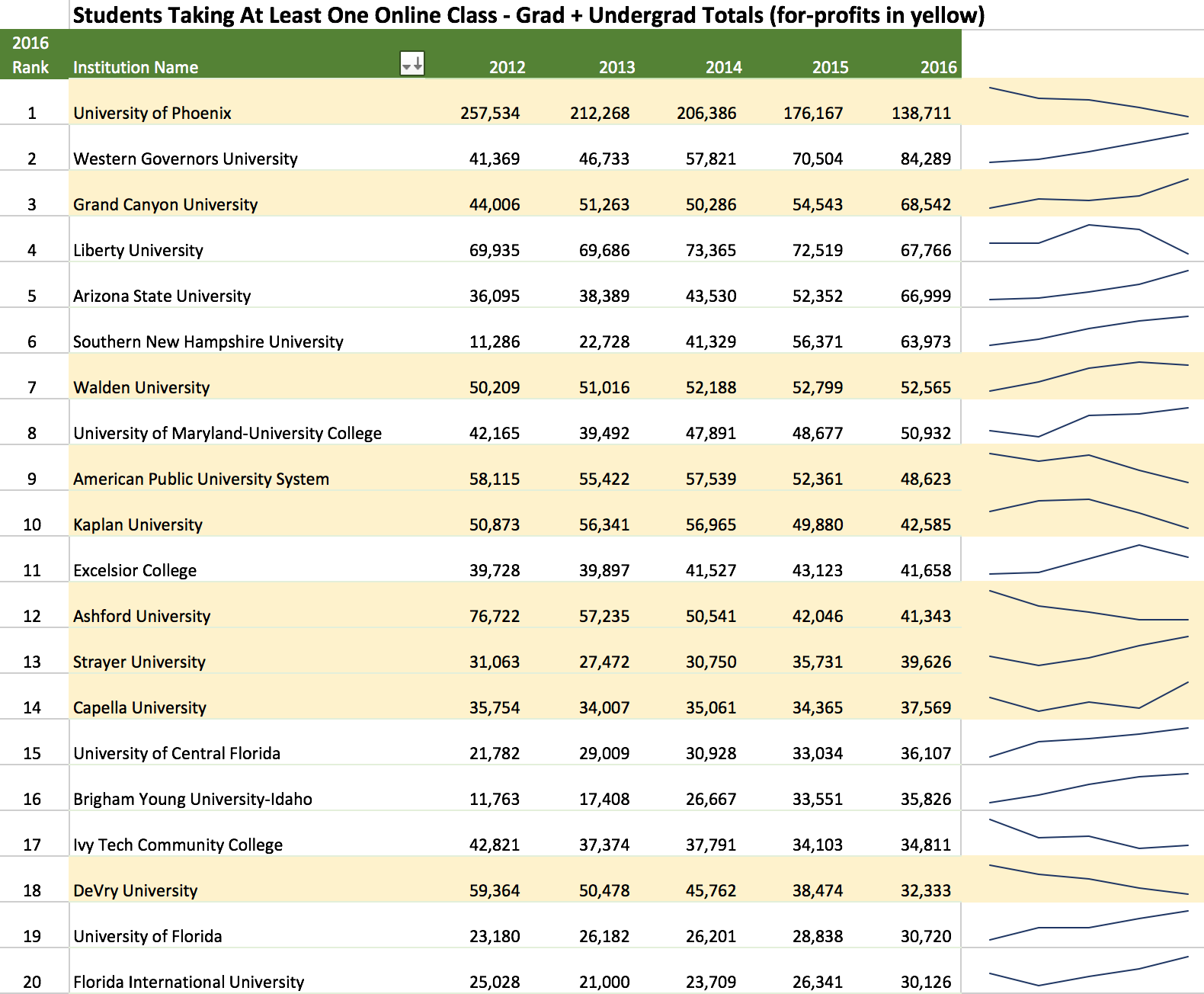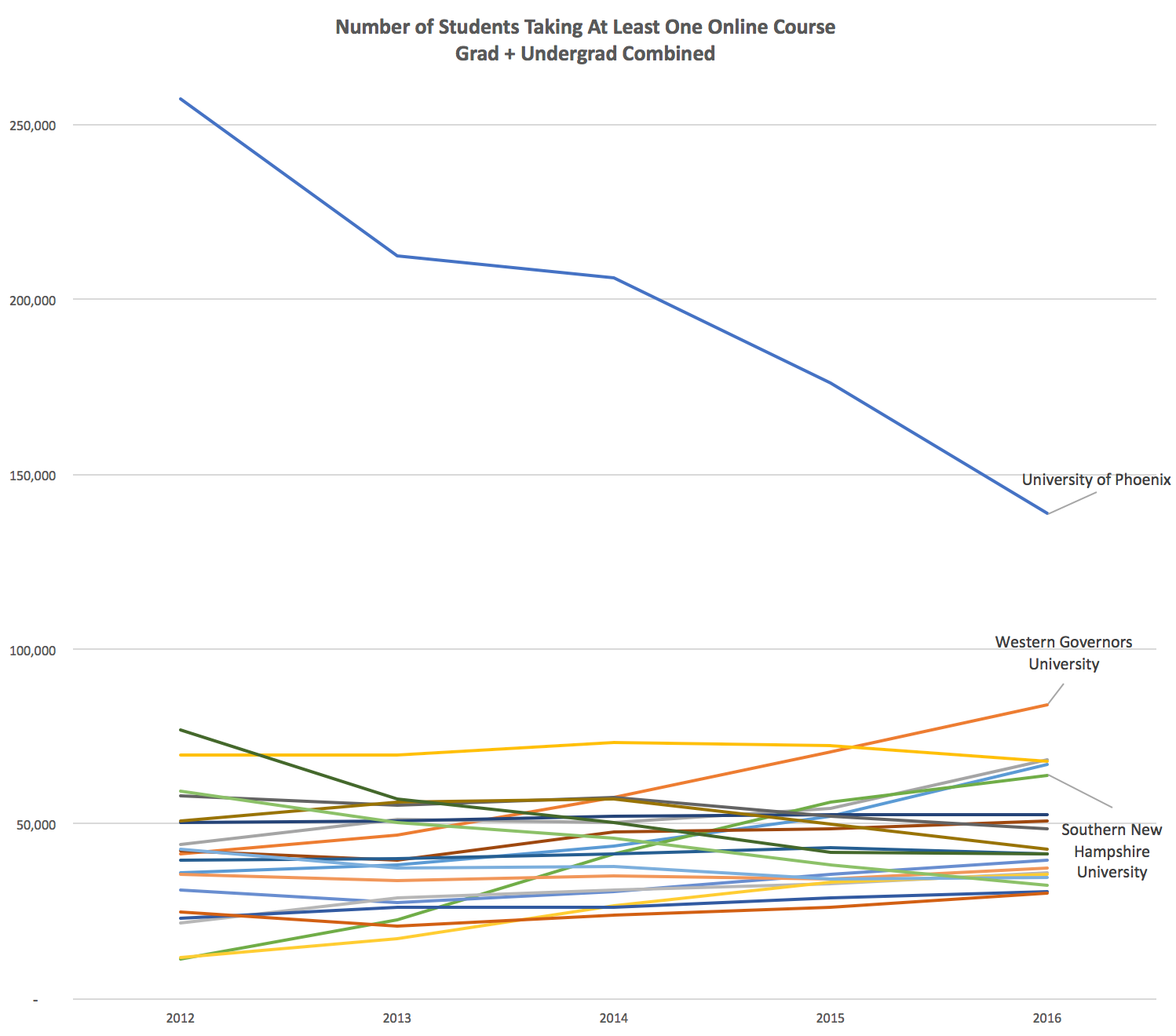The National Center for Educational Statistics (NCES) and its Integrated Postsecondary Education Data System (IPEDS) provide the most official data on colleges and universities in the United States. This is the fifth year of data, and we have an opportunity to view trends over time.
Let’s look at the top 20 online programs for Fall 2016 (in terms of total number of students taking at least one online course for grad and undergrad levels combined) in the US. Some notes on the data source:
- I have combined the categories ‘students exclusively taking distance education courses’ and ‘students taking some but not all distance education courses’ to obtain the ‘at least one online course’ category;
- IPEDS tracks data based on the accredited body, which can differ for systems – I manually combined most for-profit systems into one institution entity as well as Arizona State University;
- I have highlighted for-profit institutions in yellow and added sparklines to help visualize trends;
- See this post for Fall 2016 profile by sector and state.
One additional trend to capture is the dramatic change in the (previous) dominance of the University of Phoenix for overall and online enrollment. For perspective I have also labeled Western Governors University and Southern New Hampshire University.


[…] The steady growth of online learning in USHE (2012-2016) – Phil Hill at e-literate looks at the latest stats on online learning, defined as students taking at least one module online. Overall the sector is seeing slow but steady growth: Arizona State University has grown 36K to 67K, University of Maryland 42K to 50K while University of Phoenix underwent precipitous collapse 257K to 138K. In short, incremental provision is seeing incremental adoption as students take advantage of the flexibility and/or cost savings of online – here […]